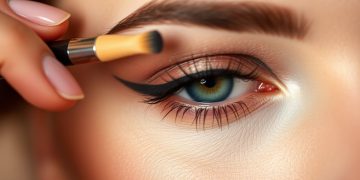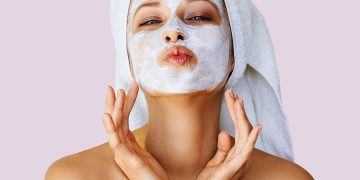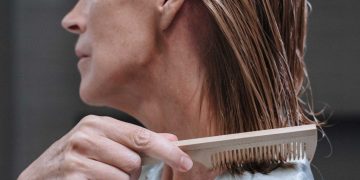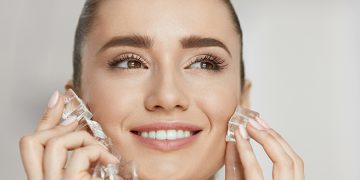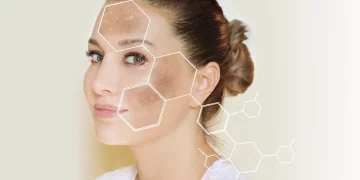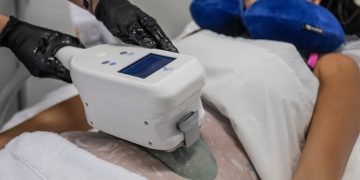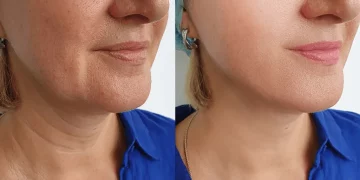Introduction: The Rising Popularity of Laser Skin Treatments
Laser skin treatments have become a cornerstone in the world of cosmetic dermatology. From skin resurfacing to hair removal, these treatments promise to address a wide range of skin concerns with minimal downtime and lasting results. Among the various options, laser skin treatments are celebrated for their precision and effectiveness in improving skin tone, texture, and overall appearance. However, one question remains: Who can truly benefit from these treatments? Are they suitable for every skin type, or are there limitations?
In this article, we will explore the different types of laser skin treatments, discuss which skin types are best suited for these treatments, and delve into the benefits and risks associated with laser therapies.
1. What Are Laser Skin Treatments?
1.1. Understanding Laser Skin Treatments
Laser treatments use focused light to treat skin issues. Depending on the specific treatment, lasers can target layers of the skin to stimulate collagen production, improve skin texture, or remove unwanted hair. There are several types of lasers, each suited for different skin concerns:
- Fractional CO2 Laser: Helps treat scars, wrinkles, and skin texture by targeting deep skin layers.
- Ablative Lasers: These lasers remove outer layers of skin to treat sun damage, pigmentation, and wrinkles.
- Non-Ablative Lasers: These lasers work by stimulating collagen growth without removing skin layers, focusing on issues like pigmentation and minor wrinkles.
- Laser Hair Removal: Targets and destroys hair follicles to prevent hair growth.
- Pulsed Dye Lasers (PDL): Often used to treat redness and vascular lesions like rosacea.
- Intense Pulsed Light (IPL): A non-laser light therapy, effective for treating pigmentation issues and skin rejuvenation.
Each type of laser treatment works differently, targeting specific layers of the skin or underlying tissues to create a desired effect. Some lasers are more aggressive, while others are gentler, offering customizable solutions for various skin needs.
2. Which Skin Types Can Benefit from Laser Skin Treatments?
2.1. The Fitzpatrick Skin Type Classification
Laser treatments are not one-size-fits-all. The effectiveness and safety of these treatments often depend on your skin type, which can be classified using the Fitzpatrick Skin Type Scale. This scale categorizes skin into six types based on skin color and response to UV light:
- Type I: Very fair, always burns, never tans (e.g., pale, freckled skin).
- Type II: Fair, burns easily, tans minimally (e.g., light-skinned individuals).
- Type III: Medium, sometimes burns, tans gradually (e.g., olive or light brown skin).
- Type IV: Olive, rarely burns, tans well (e.g., light to medium brown skin).
- Type V: Brown, very rarely burns, tans darkly (e.g., darker-skinned individuals).
- Type VI: Dark brown or black, never burns, tans very darkly (e.g., African descent).
Different lasers can work better on different skin types due to the variation in melanin levels (the pigment responsible for skin color) and how the skin reacts to heat. Let’s break down which skin types tend to benefit the most from laser skin treatments.
2.2. Ideal Candidates for Laser Skin Treatments
- Fair to Medium Skin (Types I–III): People with fair to medium skin types generally have the most success with fractional lasers, CO2 lasers, and IPL treatments. These treatments can address issues like fine lines, pigmentation, and skin texture with minimal risk of hyperpigmentation or scarring.
- Darker Skin (Types IV–VI): People with darker skin tones (especially those in Type IV and above) can still benefit from laser treatments, but caution is needed. Certain lasers that target melanin in the skin (like Alexandrite or Diode lasers) can cause hyperpigmentation or hypopigmentation in darker skin tones, leading to uneven skin pigmentation. However, non-ablative lasers and Nd:YAG lasers are considered safer for individuals with darker skin because they target deeper layers without damaging the surface, minimizing the risk of discoloration.
3. Common Skin Concerns Treated by Laser Skin Treatments
3.1. Acne Scarring
Laser treatments, particularly fractional CO2 lasers and Erbium lasers, are often used to treat post-acne scars. These lasers help to remove damaged skin layers and promote collagen production, leading to smoother, more even skin texture. Non-ablative lasers are often preferred for acne treatment, as they are gentler on the skin.
- Best for: All skin types, though those with darker skin should opt for more conservative treatments to avoid hyperpigmentation.
3.2. Hyperpigmentation and Sun Damage
Laser treatments like IPL and Pulsed Dye Lasers can effectively address sunspots, freckles, and other pigmentation irregularities. They target the pigmented areas of the skin and break them down, resulting in a more even complexion.
- Best for: Lighter skin types (I–III) have the best results with IPL. Darker skin tones should use caution and consult with an experienced provider to minimize risk.
3.3. Wrinkles and Fine Lines
Laser resurfacing with CO2 lasers or fractional lasers can reduce the appearance of wrinkles and fine lines by stimulating collagen production and encouraging skin regeneration. This treatment is often used on the face, neck, and hands.
- Best for: All skin types can benefit, but lighter skin types (I–III) typically show better outcomes without the risk of pigmentation changes.
3.4. Skin Tightening and Firming
For those looking to address loose skin or loss of elasticity, non-ablative lasers like the Nd:YAG laser can stimulate collagen production and tighten the skin without removing layers. These treatments are often used on the jawline, neck, and abdomen.
- Best for: All skin types can benefit from non-ablative lasers for skin tightening, as these lasers work deeper into the skin without affecting the surface.

4. Who Should Avoid Laser Skin Treatments?
While laser skin treatments can benefit many people, not everyone is an ideal candidate. Certain factors can make a person unsuitable for these treatments:
4.1. Active Skin Conditions
People with active skin conditions such as eczema, rosacea, or active acne may not be suitable candidates for laser treatments. These conditions can cause the skin to be more sensitive or inflamed, and laser treatment could exacerbate these issues.
4.2. Darker Skin with a History of Hyperpigmentation
While many people with darker skin can benefit from lasers, those with a history of keloids or post-inflammatory hyperpigmentation (PIH) should proceed with caution. If you have had dark spots or scarring after previous skin treatments or injuries, laser treatments could potentially worsen the pigmentation issues.
4.3. Pregnancy and Breastfeeding
As with most cosmetic procedures, laser treatments are generally not recommended during pregnancy or breastfeeding, as the effects on the developing fetus or infant are not well studied. Always consult with a doctor before undergoing any procedure during this period.
5. What to Expect: The Laser Treatment Experience
5.1. The Consultation Process
Before undergoing laser treatment, a thorough consultation with a board-certified dermatologist or licensed practitioner is essential. They will assess your skin type, discuss your goals, and determine the most appropriate type of laser for your needs. If you have darker skin, make sure to choose a provider with experience treating different skin tones.
5.2. The Treatment Session
The actual laser treatment is typically quick, ranging from 15 minutes to an hour, depending on the area being treated. Topical numbing cream may be applied to minimize discomfort, and you may feel a slight tingling or heat during the procedure. Afterward, your skin may appear red or swollen, but this typically subsides within a few hours to a few days.
5.3. Post-Treatment Care
Post-treatment care is crucial for maximizing results and minimizing risks. This may include:
- Avoiding direct sun exposure for several weeks.
- Applying soothing creams or gels recommended by your practitioner.
- Staying hydrated and using gentle skincare products.
6. Conclusion: Is Laser Skin Treatment Right for You?
Laser skin treatments have the potential to dramatically improve skin texture, reduce pigmentation, tighten the skin, and enhance facial contours. However, the effectiveness of these treatments depends on your skin type, the specific concerns you’re trying to address, and the expertise of your practitioner. By understanding the various lasers available and choosing the right one for your skin, you can safely and effectively enhance your appearance.
If you’re considering laser skin treatment, always seek advice from a qualified professional to ensure it’s a good fit for your skin and aesthetic goals. With the right approach, laser treatments can help you achieve a glowing, youthful complexion—one that enhances both your outer beauty and inner confidence.









